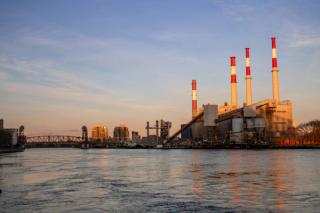
Australian Sustainability Reporting Standards (ASRS): Why does it matter and what do stakeholders actually want to know?
- Post Date
- 17 February 2025
- Read Time
- 3 minutes

The introduction of the ASRS means that mandatory climate related financial disclosures are now a reality for nearly every company in Australia. The mandatory climate disclosure reporting has been put in place to improve transparency, accountability and encourage sustainable business operations – driving the net zero transformation. A lot of the focus to date has been on the reporting burden and minimum pathways to compliance (with good reason, there is A LOT to do (read more here).
Want a quick overview?
Our Climate Experts prepared an ASRS Factsheet to help you find your feet with the mandatory climate disclosures. You can also contact us to discuss further or sign up to attend the Free Webinar taking place on 27th February 2025.
Join the Free WebinarClimate disclosure reporting is becoming more than just a compliance requirement, with stakeholder demands driving companies to actively engage with actions resulting from the assessments. This article provides insights into the key takeaways that stakeholders, investors and the government want to understand.
Governance:
Stakeholders want confidence that sustainability and climate issues have the proper oversight, and appropriate measures to ensure they are managed properly.
This goes both ways, both ensuring that the issues aren’t ignored or lack the sponsorship required to be properly tackled, but equally ensuring that certain issues aren’t given undue attention when they aren’t a material issue for the business.
Risk Management:
Stakeholders expect climate change risks to be integrated into existing risk management systems, ensuring they are assessed, monitored, and managed within day-to-day operations rather than in isolation.
Strategy:
Stakeholders want to know that the business has a plan to manage and mitigate climate change issues over the long term.
Climate scenario analysis enables companies to navigate climate uncertainties systematically, while a comprehensive transition plan - covering both decarbonization and the broader impacts on products, customers, and the value chain - demonstrates that adequate resources and focus are being dedicated to these issues.
Metrics and Targets:
You can only manage what you measure – and stakeholders want clarity on companies’ impact, as well as measurements of success on how they are managing emerging risks.
This covers:
- Scope 1 & 2: Operational emissions, serving as a proxy for future exposure to regulations, carbon pricing, and customer pressures.
- Scope 3: Value chain emissions, identifying transition risks in the supply chain and downstream challenges as heavy emitters decarbonize.
- Decarbonization targets: Clear plans and timelines for reducing emissions.
- Other metrics: Investments in adaptation, mitigation, and risk reduction.
How SLR can help
SLR has a dedicated climate and energy transition team of over 600 professionals globally, providing leading climate science and data-driven solutions. Our climate insights allow our team to support clients to assess and quantify the financial impact from both physical and transition climate impacts. SLR is at the forefront of enhancing climate resilience and unravelling its complexities to help businesses successfully integrate solutions across the value chain to meet net zero commitments and achieve energy security and help ensure a Just Transition.
Contact us to discuss further.

